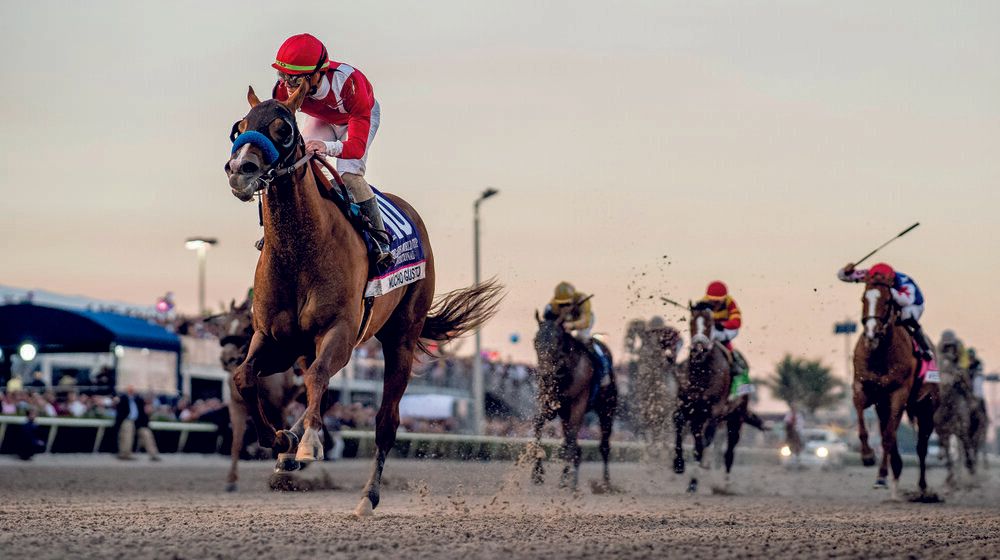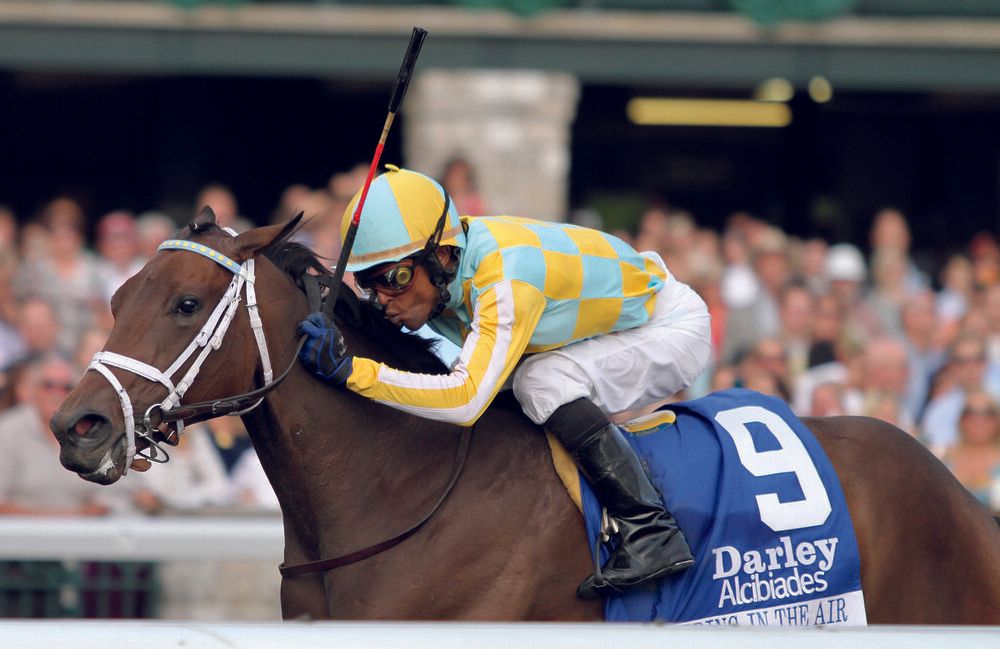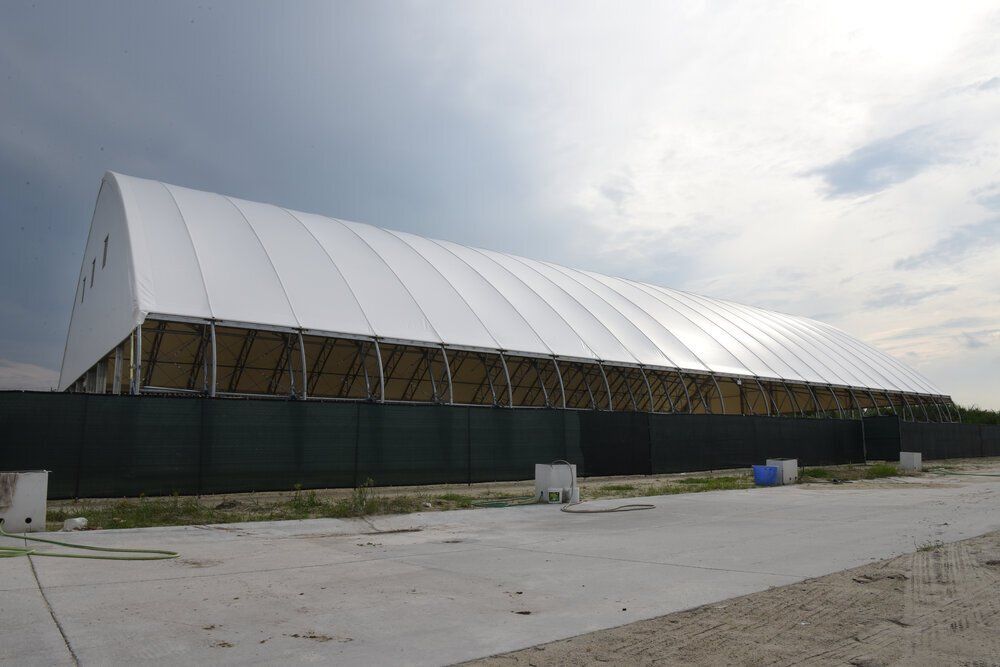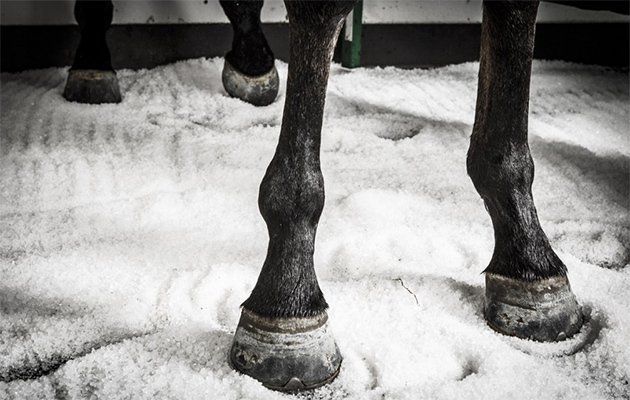Life after Lasix

Article by Denise Steffanus | Trainer Magazine
An estimated 95% of American racehorses go postward on Lasix, a diuretic that reduces bleeding in the lungs caused by extreme exertion. Now, nearly 50 years since horsemen and veterinarians battled for approval to use the therapeutic drug on race day, stakeholders in the industry have launched an initiative to phase out Lasix from American racing.
The debate whether Lasix, technically known as furosemide, is a performance enhancer or a performance enabler has raged for decades. With that debate comes the discussion whether Lasix helps the horse or harms it. But we’re not going to get into that debate here.
With racetrack conglomerates such as The Stronach Group and Churchill Downs adopting house rules to ban Lasix use on race day in two-year-olds starting this year and in stakes horses beginning 2021, the political football of a total Lasix ban for racing is headed to the end zone. Whether that total ban happens next year or in five years, racing needs to take an objective look at how this move will change the practices and complexion of the industry at large. The Lasix ban will affect more than what happens on the racetrack. Its tentacles will reach to the sales ring, the breeding shed, the betting window, and the owner’s pocket.
When Lasix first was approved for racing in 1974, only horses that visibly bled out the nostrils—an extreme symptom of exercise-induced pulmonary hemorrhage (EIPH)—were permitted to use the drug. A few years later, flexible endoscopes enabled veterinarians to identify horses with trace levels of EIPH internally that qualified them for Lasix. So many horses became approved for Lasix that most jurisdictions stopped requiring proof of EIPH to send a first-time starter postward on Lasix. All trainers had to do was declare it on the entry. Soon, nearly every horse was racing on Lasix, many with no proof it was needed. And that’s the situation we have today.
Racing regulations tag a horse as a bleeder only if it visibly hemorrhages from one or both nostrils (epistaxis). For this article, “bleeder” and “bleeding” are general terms for all horses with EIPH, not just overt bleeders. With almost every horse now competing on Lasix, no one knows how many horses actually need the drug to keep their lungs clear while racing. When Lasix is banned, we’ll find out.
Safety First
How a particular horse will react when capillaries in its lungs burst is unpredictable. Thoroughbreds are tough, so most horses will push through the trickle, and some may win despite it. Other horses may tire prematurely from diminished oxygen, which could cause them to take a bad step, bump another horse, or stumble. Fractious horses with more severe bleeding may panic when they feel choked of air. Will the current number of human and equine first-responders be adequate to handle the potential increase in these EIPH incidents?
Racing Hall of Fame rider Mike Smith, who earned two Eclipse Awards as outstanding jockey, has ridden in more than 33,000 races during his four decades on the track. He said he can feel a change in the horse under him if it begins to bleed.
“Honestly, a lot of times you just don’t see that ‘A’ effort that you normally would have seen out of the horse,” he said. “You know, they just don’t perform near as well because of the fact that they bled, which you find out later. … When they bleed enough, they can literally fall. It can happen. It’s dependent on how bad they bleed. If a horse bleeds real bad, they don’t get any oxygen. … I’ve been blessed enough to have pulled them up, and if I wouldn’t have, they probably would have gone down or died, one or the other, I guess. They’re few and far between when it’s that bad, but it does happen.
“If you literally see the blood, then you stop with them. You don’t continue because it’s very dangerous.”
In 2012, Dr. Tom Tobin, renowned pharmacologist at the University of Kentucky’s Maxwell Gluck Equine Research Center, and his colleagues reviewed the correlation between EIPH and acute/sudden death on the racetrack, as set forth in published research. They noted that 60%-80% of horses presumed to have died from a “heart attack” were found upon necropsy to have succumbed to hemorrhaging into the lungs. Tobin and his colleagues concluded their review with a warning: “EIPH-related acute/sudden death incidents have the potential to cause severe, including career-ending and potentially fatal injuries to jockeys and others riding these horses.”
Mark Casse has won 11 Sovereign Awards as Canada’s outstanding trainer, five Breeders’ Cups, and three Triple Crown races. He’s a member of the Horse Racing Hall of Fame in both Canada and the United States, one of just three individuals to accomplish that feat (Lucien Laurin and Roger Attfield are the others).
“If as soon as they ban Lasix, we start having more injuries, they’re going to have to do something about that,” Casse said. “It will be more than just first-responders. That’s pretty scary to think, ‘Ok, we’re going to take horses off Lasix, and so now we’re going to need more medical people out there.’ That doesn’t sound too good to me.”

SPRING IN THE AIR WINS THE 61ST RUNNING OF THE DARLEY ALCIBIADES AT KEENELAND RACECOURSE.
Training Strategies
Casse has a special way of training horses with EIPH, but he was cagey about the details and reluctant to disclose his strategy.
“What I do is try to give any horse that I feel is a bleeder, especially four to five days into a race, a very light schedule,” he said. “That’s one of the main things I’ll do with my bad bleeders. So, in other words, not as much galloping or jogging—stuff like that.”
In 2018, trainer Ken McPeek had the most U.S. wins (19) without Lasix. Besides racing here, McPeek prepares a string of horses to race in Europe, where Lasix is not permitted on race day. He puts those horses on a lighter racing schedule.
“As long as a horse is eating well and doing well, their chances of bleeding are relatively small,” he said. “If a horse is fatigued and stressed, I always believed that would lead to bleeding.”
McPeek said if a two-year-old bleeds, the owner and trainer are going to have a long-term problem on their hands, and they’re better off not racing at two.
In 2012, the first year the Breeders’ Cup banned Lasix in two-year-olds, Casse’s rising star Spring in the Air entered the Grey Goose Juvenile Fillies (Gr1) fresh off an extraordinary effort in the Darley Alcibiades Stakes (Gr1), where she lagged behind in tenth then launched an explosive four-wide dash coming out of the turn to win by a length.
The filly had run all four prior races on Lasix, but without Lasix in the Juvenile Fillies, she never was better than fifth. After the race, Casse told reporters she bled.
“She went back on Lasix,” Casse said of Spring in the Air, who became Canada’s Champion 2-Year-Old Filly that same year.
Dr. Jeff Blea is a longtime racetrack veterinarian in California and a past president of the American Association of Equine Practitioners. He said racing without Lasix is going to require a substantial learning curve for trainers and their veterinarians. During this interview Blea was at Santa Anita Park, where he’s been working with trainers to figure out the best way to manage and train horses that race without Lasix.
“That’s a case-by-case discussion because all trainers have different routines and different programs,” he said. “In addition to the variability among trainers, you have individual horses that you have to factor into that conversation as well.”
When a horse comes off the track from a work or a race with severe EIPH, Blea asks the trainer if this has happened before or if it’s something new. If it’s new, he looks at the horse’s history for anything that could have precipitated it. Blea uses ultrasound and X-rays to examine the horse’s lungs.
“With ultrasound, I can often find where the bleed was,” he said. “If I X-ray the lungs, I’ll want to look for a lung lesion, which tells me it’s a chronic problem. I want to look at airway inflammation and the overall structure of the lungs. … I’ll wait a day and see if the horse develops a temperature. I’ll pull blood [work] because this bleed could be the nidus for a respiratory infection, and I want to be able to be ahead of it. I typically do not put horses on antibiotics if they suffer epistaxis, or bleed out the nose. Most times when I’ve had those, they don’t get sick, so I don’t typically prophylactically put them on antibiotics.
Based on his diagnostic workup, Blea will recommend that the horse walk the shed row for a week or not return to the track for a few weeks.
“Depending on the severity of my findings, the horse may need to be turned out,” he said. “I use inhalers quite a bit. I think those are useful for horses that tend to bleed. I’m a big fan of immune stimulants. I think those are helpful. Then just old-fashioned, take them off alfalfa, put them on shavings...things like that.”
Blea discusses air quality in the barn with the trainer—less dust, more open-air ventilation, and common sense measures to keep the environment as clean and healthy as possible.
Prominent owner Bill Casner and his trainer Eoin Harty began a program in January 2012 to wipe out EIPH in his racehorses. Casner's strategy to improve air quality for his horses and limit their exposure to disease is to power-wash stalls before moving into a shed row and fog them with ceragenins—a powerful, environmentally safe alternative to typical disinfectants. He has switched to peat moss bedding, which neutralizes ammonia, and he only feeds his horses hay that has been steamed to kill pathogens and remove particulates.
Particulate Mapping
Activities in barns, particularly during morning training hours, kick up a lot of dust. Researchers at Michigan State University looked at particulates (dust) that drift on the air in racetrack barns. Led by Dr. Melissa Millerick-May, the team sampled the air in barns and mapped the particulate concentration in a grid, documented the size of the particles, identified horses in those barns with airway inflammation and mucus, then correlated the incidence of airway disease with hot spots of airborne particulates.

GULFSTREAM PARK HAS ERECTED THREE “TENT BARNS” THAT ARE LARGE AND AIRY WITH HIGH CEILINGS AND FANS NEAR THE TOP.
For part of the 18-month study, the research team used hand-held devices to assess airborne particulates; another part outfitted the noseband of each horse's halter with a device that sampled the air quality in the horse's breathing zone.
Some stalls appeared to be chronic hot spots for particulates, and horses in those stalls chronically had excess mucus in their airways. Often, moving the horses out of those stalls solved the problem.
These hot spots were different for each barn. Interestingly, because small particulates lodge deep in the lungs more easily than large ones, a stall that visibly appears clear might be an invisible hot spot.
Getting Prepared for the Pegasus—Lasix-Free
Dr. Rob Holland is a former Kentucky racing commission veterinarian based in Lexington who consults on infectious disease and respiratory issues, for which he obtained a PhD. Months prior to the Lasix-free Pegasus World Cup Invitational Stakes at Gulfstream Park in Florida, several trainers asked his advice on how to condition their horses so they could compete without Lasix. He told them they needed to start the program at least six weeks before the race. His first recommendation was to use ultrasound on the horse’s lungs to make sure they didn’t have scarring, which is a factor in EIPH, because scar tissue doesn’t stretch, it rips. Scarring can develop from a prior respiratory infection, such as pneumonia, or repeated episodes of EIPH. Next Holland directed the trainers to have the horse’s upper airway scoped for inflammation and excess mucus.
“I had one trainer who scoped the horse’s upper airway and trachea and decided, with the history of the horse, against running in the race without Lasix,” Holland said. “So there were trainers who were really on the fence, and that was for the betterment of the horse. Every trainer I talked to, that was their main focus: How do I do this so that my horse is OK? That was always the first question they would ask me. Second, they would ask me if I could guarantee [that] running their horse without Lasix wouldn’t cause a problem, and the answer is there’s no guarantee.”
Holland instructed trainers to start cleaning up the horse’s environment at least six weeks before the race to rid the air of dust, allergens and mold. He told them not to store hay and straw above the stalls; remove the horse from the barn while cleaning stalls and shaking out bedding; don’t use leaf blowers to clean the shed row; don’t set large fans on the ground in the shed row; elevate them so they don’t stir up dust; practice good biosecurity to avoid spreading disease; and steam or soak the horse’s hay and feed it on the ground. All this reduces irritation and inflammation in the airway.

THE PEGASUS WORLD CUP INVITATIONAL AT GULFSTREAM PARK, 2020.
Holland prescribed nebulizing the horse’s lungs twice a day either with a chelated silver solution that kills microorganisms or ordinary saline solution to soothe the airway. He cautioned trainers with allergic horses not to use immunostimulants, which might cause adverse reactions in them.
By starting the program well in advance of the race, trainers were able to experiment with management and training strategies to see which worked best.
“We programmed all the horses to be ready for a race without Lasix by starting the program at least a month before the race,” Holland said. “We tried to simulate the exact situation they’d be going into at Gulfstream—same bedding, same feed, same hay, but no meds. If the horses didn’t have a problem, they could give their best. Also, I wanted the trainers to test the theory that the horse could do OK in a work without Lasix. So the horses all worked and got scoped afterward to see that there weren’t any issues before the Pegasus. The trainers followed my advice, and they knew their horses would be OK. And they were.”
Confidentiality prohibited Holland from identifying the trainers who consulted him, but he said all their horses ran competitively in the Pegasus with only trace amounts of bleeding or none at all.
Help Us, Please
Some horsemen have expressed frustration, complaining that racetracks are telling them they have to race without Lasix …

